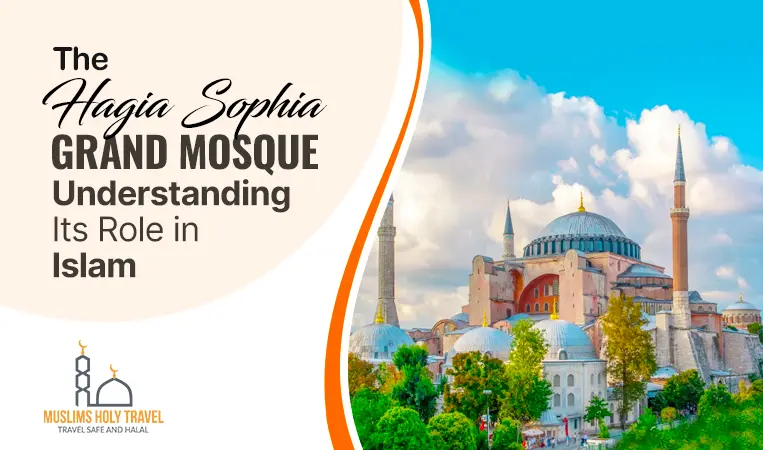
Al-Aqsa Mosque is a landmark of great significance for Muslims, and is also deeply associated with the history of Judaism and Christianity. For Muslims, it is the 3rd most sacred religious site, after the Kaaba in Makkah and the Prophet’s Mosque in Madinah. Masjid-al-Aqsa is located in the Old City of Jerusalem and constitutes a part of the larger compound, Al-Haram Al-Sharif.
The mention of this mosque in the Quran and its relevance to Prophet Muhammad’s miraculous night journey in Surah Al Isra (17:1) further depicts its massive importance for Muslims and justifies its value in their hearts.
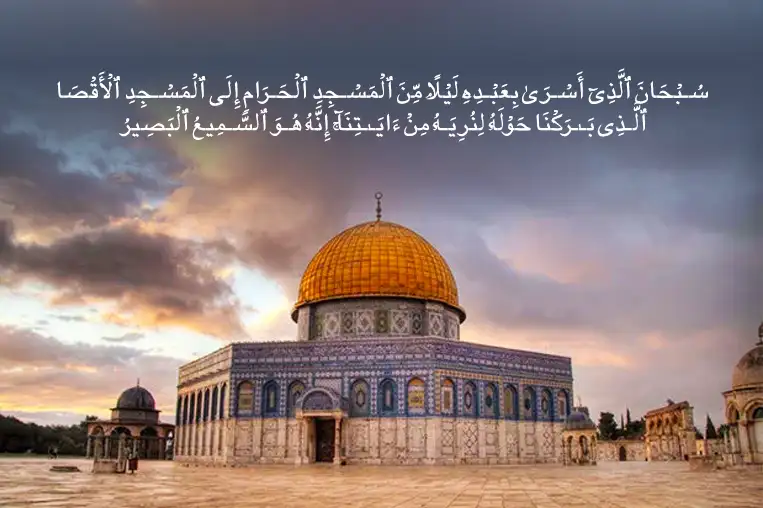
“Exalted is He who took His Servant by night from al-Masjid al-Haram to al-Masjid al-Aqsa, whose surroundings We have blessed, to show him of Our signs. Indeed, He is the Hearing, the Seeing.” - Sahih International
Beyond religion, the mosque holds a rich past that involved several rulers, empires, cultural transitions, and wars. Stay with us till the end as we will share insights into the entire historical journey and evolution of the mosque from its early days in Islamic history, who built the mosque Al Aqsa, its deep-rooted significance for Muslims, and latest updates on its current status.
Its history dates back to the 7th century CE and those were the times of early Islam’s expansion. The widespread of the Islamic Caliphate after the death of the Prophet Muhammad (P.B.U.H), followed by the capture of Jerusalem by the Muslim army under Umar ibn al-Khattab’s caliphate in 637 CE is a powerful reminder of how mosque Al-Aqsa became the most significant landmark for the Muslims. At those times, the entire city was much under the influence of Christians and Jews. Caliph Umar and his army entered the city peacefully and equally respected the Christian holy places. There, he was presented with the area that used to house the Jewish temple once, known as the Temple Mount to the Jews and Haram Al-Sharif to the Muslims. Later on, it was selected as the site for the Al-Aqsa Mosque.
Religiously, this mosque and its location are deeply linked with the Prophet Muhammad’s Isra and Mi’raj (the night journey and ascension to the heavens). As per the Quran and Hadees, the Prophet was carried away by the angel Jibril from the Kaaba to the farthest mosque or Masjid al-Aqsa. From there, he ascended to the heavens, got a chance to meet the earlier Prophets, and was also rewarded with the instructions for the commencement of the daily prayers by the Almighty Creator. This is what elevates the physical and spiritual importance of this mosque for the Muslims, and before the Qibla was changed to Makkah, Muslims used to pray facing Jerusalem.
This was the actual time when the physical construction and early development of the mosque began under the Umayyad caliphate who led its foundation. The Dome of the Rock was built in 691 CE in Caliph Abd-al-Malik’s era who notably worked on this mosque alongside his son Caliph al-Walid I, and completed it in the early 8th century. The early mosque itself was a treat to watch, and used to be an old and large rectangular building that had the capacity to accommodate thousands of worshippers.
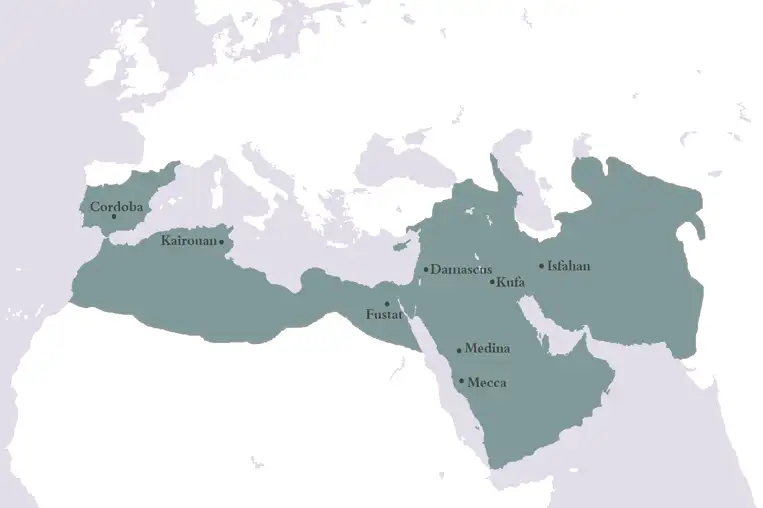
The mosque of the past featured wooden ceilings, mosaics, and marble columns. The mosque and its dome truly exhibited the beauty and power of the early Muslim empire and a great work of Islamic art and culture. In the same era, various other advancements were made regarding the mosque’s infrastructure including fountains for ablution, administrative offices, and gates. At this time, Jerusalem became the pivotal point of Islamic history and Muslims treated it with great respect. The entire mosque became the main structure and centre for learning Islam and for worship.
When the Abbasids took control of the place, the mosque suffered a great damage due to natural disasters that mainly involved earthquake and in 746 CE, a major earthquake damaged the mosque to a great extent. Later on, different renovation and repairing tasks were carried out by Caliph Al-Mahdi and Caliph Al-Mansur. Years after it, another earthquake in 1033 seriously damaged the mosque and the ruling Fatimid Caliph named Ali az Zahir commanded the rebuilding of the mosque with a different design and oversaw the entire construction work. Both Abbasids and Fatimids contributed a lot to maintain the structure and integrity of the mosque and during these times Jerusalem remained the respected holy city for everyone, and as an important symbol of Islam.
Jerusalem was captured in 1099 by the Christian Crusaders and this was one of the blackest days in the history of Islam, and specifically for the Al-Aqsa Mosque. The mosque was converted into a Christian building by the Crusaders, who then turned the mosque’s dome into a Church and used the building as a royal palace, later as the headquarters of the Knights Templar, and then as a Christian military order. It was by then referred to as Solomon’s Temple or Templum Solomonis. During such times, everything relevant to Islam in the mosque and the entire decorations were fully removed and Muslims were totally banned from entering the place or worshipping here. The mosque was completely under Christian control for around 90 years and the entire period notably hurt the sentiments of Muslims who made a lot of efforts and attempts to reclaim Jerusalem.
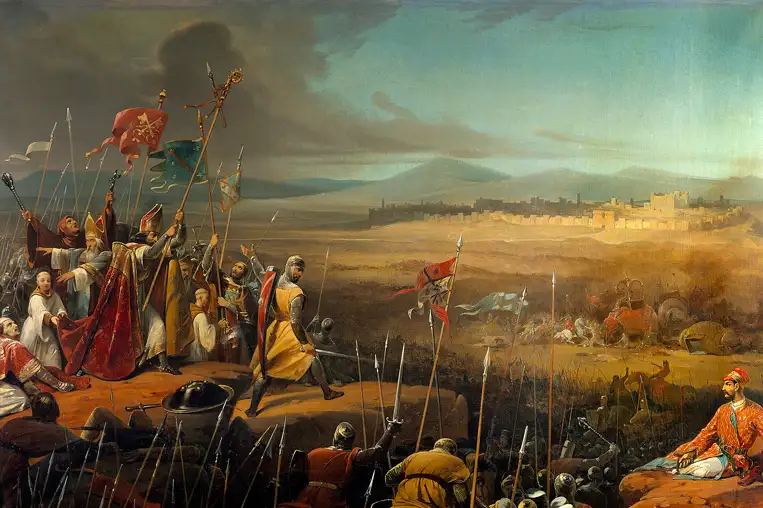
This turned out to be the golden period for Muslims as in 1187, Salahuddin al-Ayyubi who was a famous Muslim leader, recaptured Jerusalem from the Crusaders. His contributions in the Islamic history will always be remembered. At first, he restored Al-Aqsa Mosque and gave it the status it used to hold- as the primary place of Muslim worship. The entire area was again cleaned and revamped, all the Christian signs and relevant elements and decorations were removed and Islamic features were brought back and revived. Also, a new minbar or pulpit was set and installed inside the mosque that symbolised Islamic revival. Salahuddin’s contributions for the mosque were not just restricted to here; he invited different scholars, researchers, and worshippers and set up schools and Islamic learning centres within the compound of Haram al-Sharif and so, under the Ayyubids, the mosque regained its status and position as a leading religious and Islamic learning centre.
After the successful era of the Ayyubids, the Mamluks took control of the city who ruled from Egypt. They invested and put a lot of efforts in beautifying the mosque even more as well as its surrounding areas. The mosque started looking even more ethereal with thoughtfully placed gates, prayer niches, minarets, and fountains, and many of these features even exist till date. This era also marked a great transition in Islamic history, followed by the Ottoman Empire that started ruling here in 1517 and under its rule, the mosque’s compound underwent maintenance. Sultan Suleiman ordered the repair and renovation of the mosque, and lots of walls were constructed in Jerusalem during this time. During this time, the entire Islamic heritage of the area was preserved and Muslim authorities were allowed to manage the site. The mosque was also visited by lots of tourists from across the globe as a part of their holy journeys.
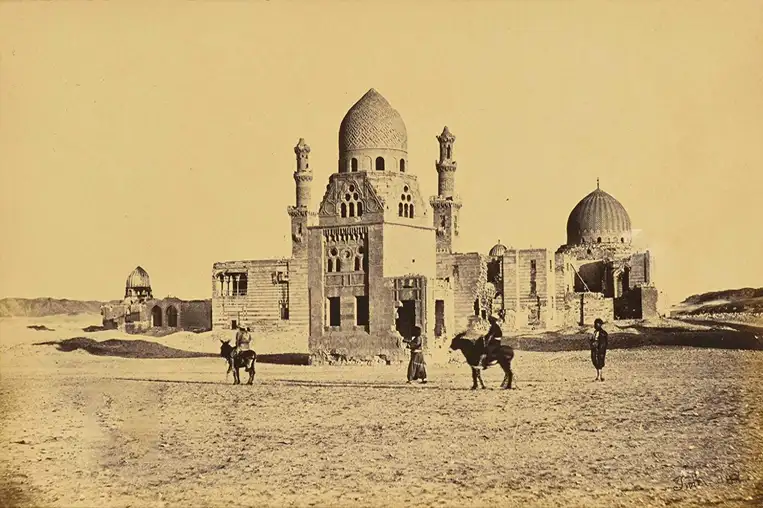
During the World War I, the Ottoman Empire witnessed its black era and after its fall, the British rulers took over the entire city as part of the British Mandate of Palestine. The mosque was still run by the Waqf, however, with the rising tensions between Jews, Muslims, and the British, the Jewish immigration increased. The mosque still continued to serve as a strong symbol of Muslim presence of the region. The mosque came under the Jordanian control following the Arab-Israeli war. The government however took care of the site and its renovation work.
East Jerusalem was captured by Israel in 1967 and during this time, the Islamic Waqf still continued to administer the Al-Aqsa compound. Over the years, there have been many incidents of protest and restrictions, and the entire arrangement has led to an ongoing tension.
The mosque till today serves as a powerful symbol of Muslim faith and resilience and any change in the status of the site leads to strong reactions from the Muslim world. The entire mosque is a symbol of Palestinian history, heritage, and culture. Though it was greatly damaged by a fire in 1969 that led to the destruction of the historic minbar introduced by Salahuddin Ayyubi. This incident just shook the entire Islamic world who then agreed to create an OIC organisation to preserve and protect all Islamic sites of immense significance and religious value.
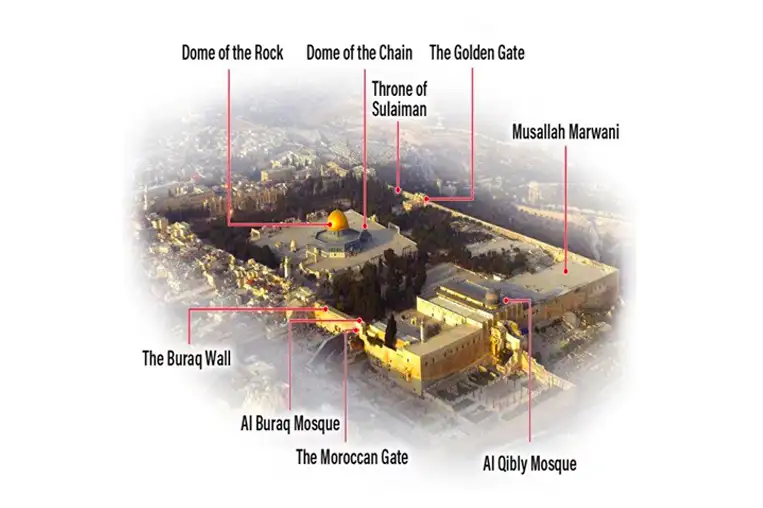
The renovation work in the mosque has also been continued, funded by Muslim countries such as Turkey and Jordan. The mosque complex today boasts the golden dome (Dome of the Rock), silver dome (the Qibli Mosque), libraries, schools, gates, and four minarets. For Muslims all over the world, it is not just a religious structure and instead it is a symbol of spirituality that is linked to the Islamic ideology, historical memories, and political identity, and any event involving this mosque gains world-wide recognition.
As aforementioned, it is the third holiest site for Muslims with a direct mention in Quran’s Surah Al-Isra’s opening verse, the mosque holds a great religious and spiritual importance for Muslims. The miraculous night and Prophet Muhammad’s ascension to the heavens makes Al-Aqsa Mosque even more special and as a symbolic representation of a place where the Earth and heavens meet. Initially, Muslims used to face Al-Aqsa while praying before Kaaba was declared as the Qibla. This fact further depicts the importance of this mosque.
Praying here earns you great spiritual rewards and as per different sayings of our beloved Prophet (P.B.U.H), a single prayer prayed at this mosque gets rewarded more times any other prayer at regular mosques. This declaration has made this mosque an iconic destination for pilgrims and those who want to get insights into Islamic history. The exact spot where the Prophet’s ascent to heaven is believed to take place is the Dome of the Rock that is placed at the center of the compound. The entire mosque includes elements and an architecture that completely revolves around Islam and makes it look even more aesthetically pleasing.
The entire mosque boasts a rich past, from the time of Caliph Umar ibn al-Khattab to different Islamic dynasties, Crusader invasions and current political changes. It was the Umayyad Caliphate who built Al-Aqsa Mosque which was later on expanded and renovated by the upcoming empires such as the Abbasids, Fatimids, and others, up till the Ottomans, each of which greatly contributed to the mosque’s beauty, functionality, and architecture. Though there have been hard times, especially when the Crusades took control and turned the mosque into a church and palace.
It was Salahuddin Ayyubi who recaptured the control of Muslims in 1187 and restored the Islamic functionality of the structure. He also placed a beautiful minbar in the mosque brought from Aleppo which became a symbol of Islamic revival and Muslim pride. The mosque became a hub of religious scholars in the Mamluk and Ottoman periods, with Muslim scholars from all across the globe who came to study here. The best thing is, the architecture and wood carvings from the past still remain deep rooted and intact in its structure and indicate the rich ancient past and the efforts of those who gave their best in preserving the mosque’s religious and spiritual status for the Muslims.
Overall, the mosque serves as a symbol of culture, sovereignty, resistance, and determination and is seen by Muslims and Arabs as a red line, which means any perceived threat to the integrity and dignity of the mosque will spark and receive public outrage and widespread protests. Further, it has been administered and managed by the Islamic Waqf that is a well-established Jordanian trust. Though the Israeli control in 1967 over the East Jerusalem sparked a global concern and tensions, Muslims believe that protecting the Al-Aqsa Mosque is a part of defending their faith and culture. Therefore, many of the volunteers and activists take up the responsibility of protecting the mosque during such hard times. Over the time, this mosque has entirely become a great symbol of hope, perseverance, and steadfastness in the face of injustice.
The current status of this mosque remains one of the most sensitive and concerning issues in the Middle East, specifically for the Muslims. A number of events in 2025 have once again brought the most to light and made it a prime centre of global attention. The mosque was recently visited in August,2025 by Israeli Minister who paid a visit to the Al-Aqsa compound. Though non-Muslims are allowed a visit to this mosque’s compound during certain times, the long-standing Status Quo agreement prohibits them from worshipping here.
During this visit, the relevant non-Muslim resources reportedly performed their Jewish prayers inside the mosque’s compound, which is seen as a major violation of the agreement and has sparked outrage from Muslim countries equally. Various Muslim majority nations have widely condemned this visit and many of them saw it a part of the attempt of Israeli political figures to make changes to the Status Quo agreement and assert the Jewish control over the site. Later on, the Israeli Prime Minister claimed to have made no changes to the treaty or change in policy, while the damage had been done which resulted in rising tensions across the region.
When we come to the early 2025 during the month of Ramadan which holds an immense importance for Muslims all across the globe, the Israeli authorities imposed a restriction on Muslim worshippers or those performing Ramadan Umrah to access Al-Aqsa as a Ziarat side. There were rules introduced for those trying to visit it from the occupied West Bank, and only men above 55, women above 50, and kids below the age of 12 were allowed to visit. Many of the Muslim leaders strongly resisted and condemned these restrictions and labelled them as injustice or discrimination, as being denied a chance to pray in this mosque felt like a deep spiritual loss and also as a violation of religious freedom as a whole.
In addition to these rising tensions, the current political situation has also casted a deep impact on the mosque, such as the ongoing famine, civilian casualties, and lack of basic supplies in Gaza that has created global tensions and any event at this mosque now will depict a picture of broader suffering, making this site even more emotionally overwhelming for Muslims across the globes. The locals are also getting threats from construction-based projects and work near the compound. Resultantly, there is a possibility and fear that such activities are aimed at changing the character of the area or its historical foundations.
Muslims from all over the world continue to express their grief and solidarity with the locals of Jerusalem and their concern over the safety and status of the revered mosque. Whenever such tensions rise or are at peak, Muslim countries such as Iran, Pakistan, Indonesia, and Turkey release strong statements that prioritise international peace and call for an immediate stop to genocide.
OIC or the Organization of Islamic Cooperation has also been quite active in this regard, regularly conducting emergency meetings to discuss the current status and developments at the mosque. Such meetings and gatherings strictly indicate the need for abiding by the Status Quo agreement and respecting the religious freedom of everyone. Similarly, the United Nations and many human rights NGOs have also raised serious concerns regarding access to the mosque and the use of force to stop peaceful worship, thereby calling on all relevant parties to maintain the religious decorum and cultural significance of the site.
Despite all the ongoing tensions and concerns, the ongoing efforts by the local and international organisations to preserve the religious heritage of the mosque have been truly remarkable. The Islamic Waqf still continues to carry out its tasks with utmost proficiency such as the restoration of damaged areas, renovation work, and routine operations held at the site. Also, many religious leaders from other religions including Christianity and Judaism also call for mutual respect and respectful and peaceful sharing of the holy spaces. While these efforts are still facing many hurdles, we can still hope for a better and brighter future of the mosque and the entire Muslim community. Any mosque should be a place of peace and not a conflict, and for Muslims, the Al-Aqsa Mosque always remains a sacred point where they used to pray and enjoy a deeply rewarding spiritual experience. The mosque continues to inspire everyone with a deep connection to the Islamic faith. Hope you enjoyed the read. For more relevant Islamic posts, keep visiting our blog section, and for the best holy experiences, don’t forget to check out our group Umrah and Ramadan Umrah packages. Muslims Holy Travel with its ATOL-protected Umrah travel packages is all eager to facilitate you!



